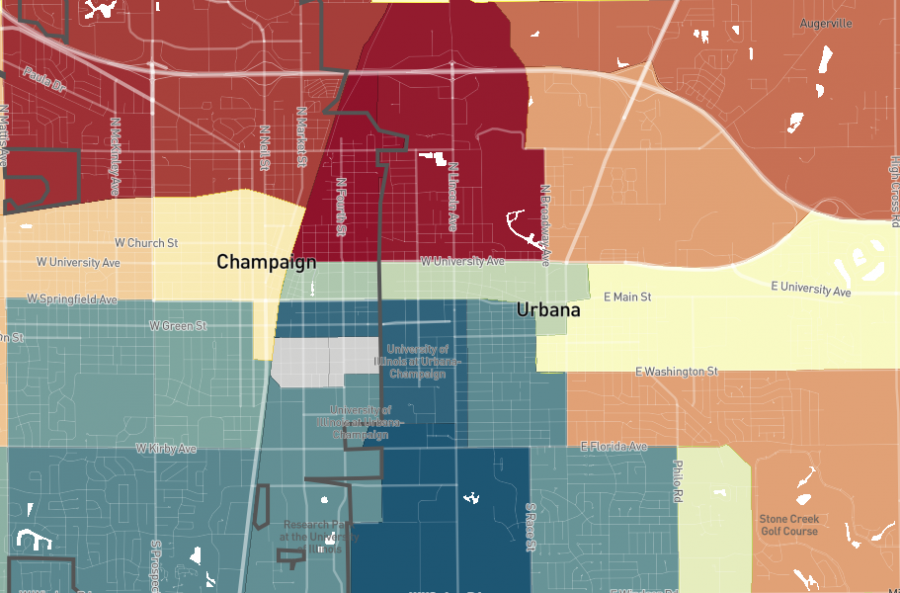Household income data shows historical disparity
Oct 18, 2018
A recently released data set highlights a stark divide in household incomes between the University and the communities north of campus, revealing the effects of historical disparity.
The Opportunity Atlas is a study that mapped the household incomes of people born between 1978 and 1983, taking into account race and gender, to understand which neighborhoods offer people the best opportunities to rise out of a low-income status.
In Champaign-Urbana, the data shows a sharp contrast between higher income households closer to campus and lower income households outside the University area.
“Both Champaign and Urbana have a long history of being very sharply racially segregated,” said Julie Cidell, associate professor in geography and geographic information science.
The areas with lower household income begin north of University Avenue. The areas with higher household income include the campus and surrounding communities to the east and west.
Get The Daily Illini in your inbox!
Cidell said the Opportunity Atlas reflects how the past can affect the present, which is likely why the divide in income is still present in the map of the two cities today.
Households in low-income areas often have decreased access to parks and recreational resources, health care, transportation and increased exposure to flooding, pollution and noise than higher income households, Cidell said.
“Lower income neighborhoods flood more,” Cidell said. “Anything that can be done, like the Boneyard Creek, the Second Street Basin, from what I understand, has really improved the situation in some neighborhoods when it rains a lot.”
The City of Champaign constructed a basin for Boneyard Creek in 1997 to protect the surrounding area from flooding for up to 100 years, according to Hitchcock Design Group, which aided the city in this project.
Esther Patt, director of the Tenant Union, said many low-income families do not have enough money to purchase cars and because the MTD bus service is either limited or not available at night and on weekends, jobs and places where low-income families can live are affected.
The incomes of families are negatively affected by the lack of transportation because jobs must be within a walking distance.
“People don’t really need a car ‘cause they could take a bus … It’s a falsehood arising from ignorance that people have because of their economic and social class. If you ride the bus and you look at the bus schedule, then you’d notice these things,” Patt said.






